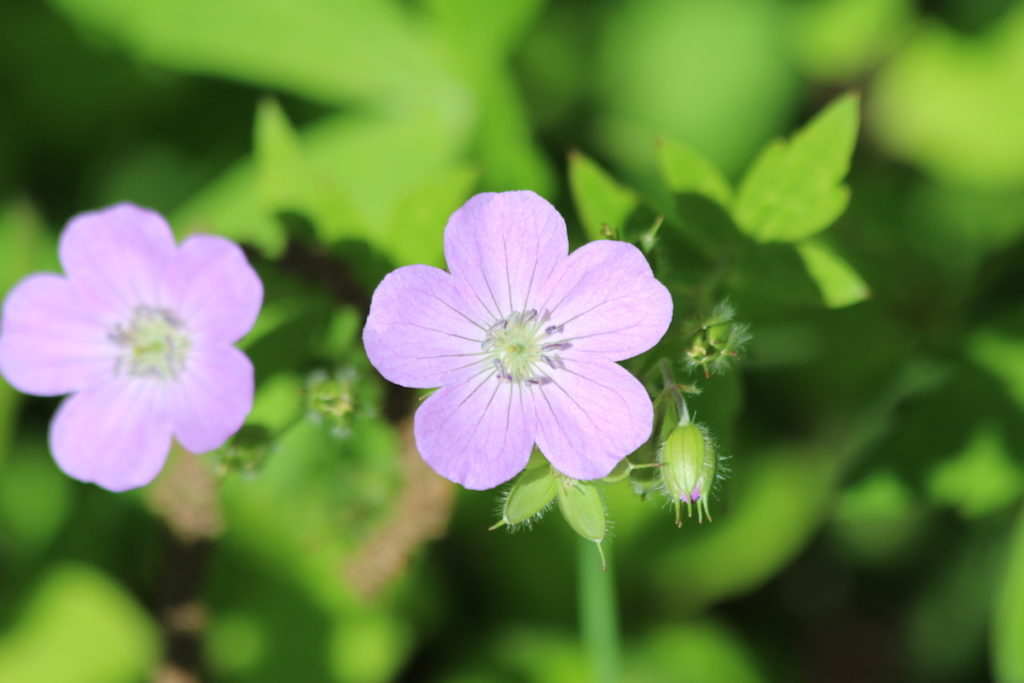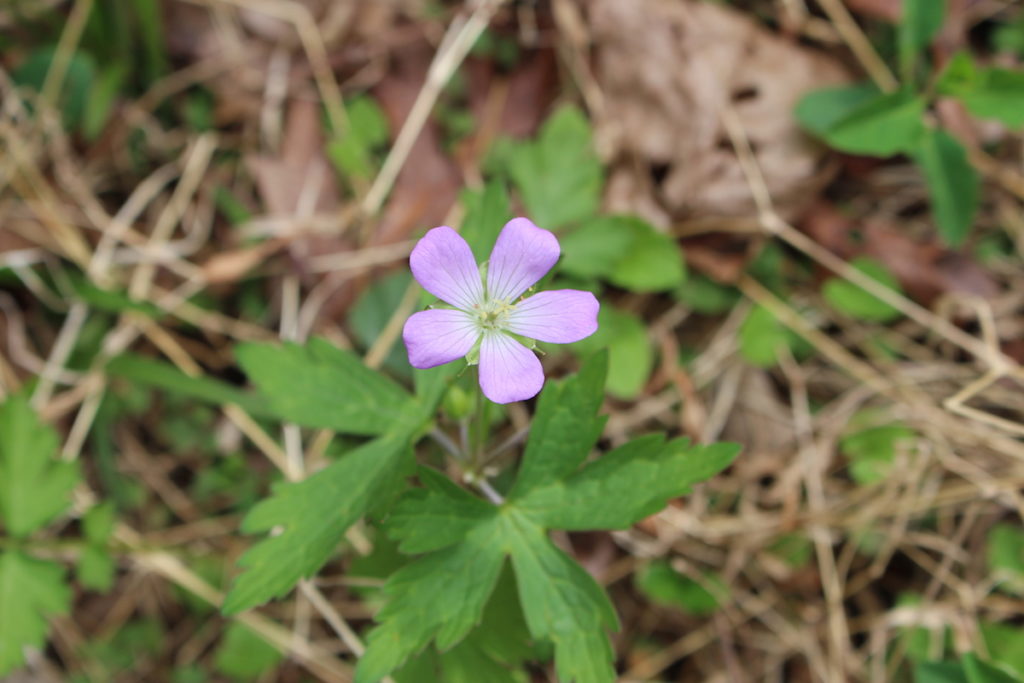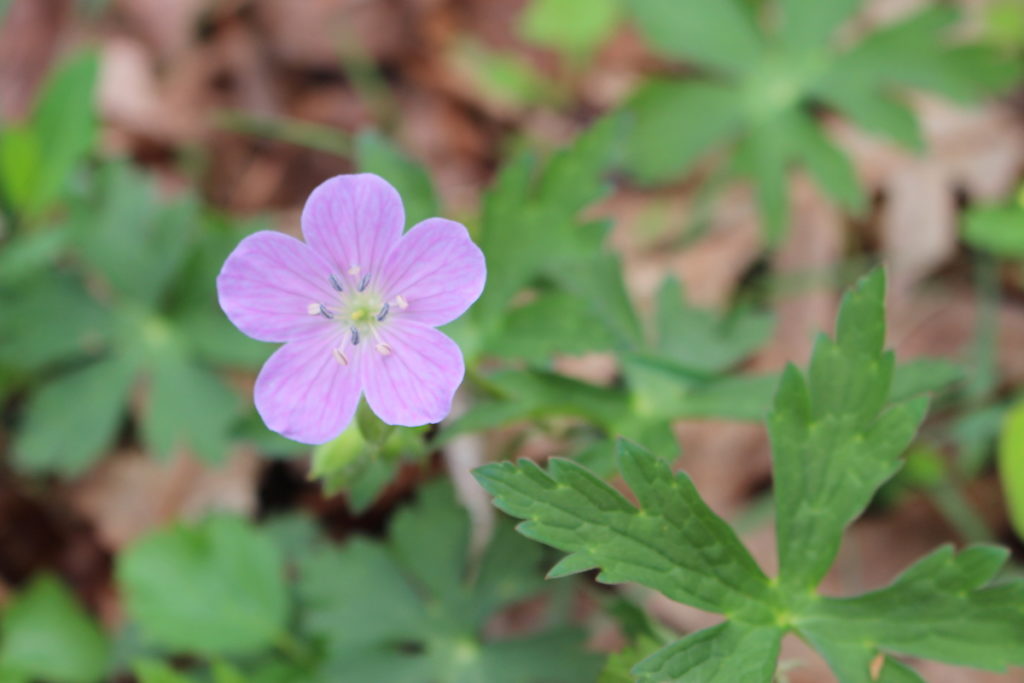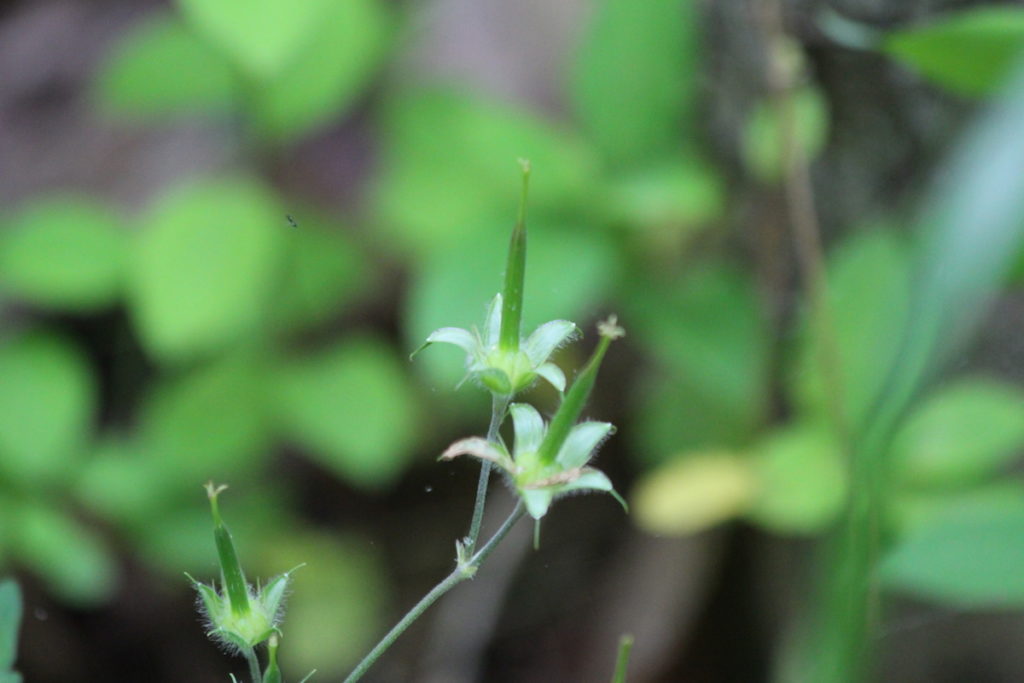
What’s in Bloom | Wild Geranium
May 5, 2021
- Wild geranium (Geranium maculatum) is a woodland perennial herb native to Eastern North America.
- It spreads via self-ejecting seeds and thick underground rhizomes.
- It belongs to the genus Geranium, named after Greek word geranos, crane, due to the beak-like seed pod.
Wild geranium (Geranium maculatum), also known as cranesbill, is a woodland perennial herb native to eastern North America, but uncommon in coastal plain regions from Virginia to Mississippi. It grows as a cluster of hairy basal leaves and flowering stems between 1-3 feet tall emerging directly from thick rhizomes within the soil, which allow it to spread non-aggressively. Basal leaves grow up to 5 inches long and wide. They are palmately cleft1 with 3-7 deep lobes which are often further separated by coarse, rounded teeth. The flowering stems have a set of two opposite leaves on their lower portion, similar to but smaller than the basal leaves.
Small clusters of 1-1.5 inch purplish pink flowers branching from the tops of the stems bloom for a month between April-June. Flowers can be bisexual or unisexual; bisexual flowers typically have larger petals. Each has five obovate (egg-shaped) petals surrounding 10 yellow-to-brown stamens and 1 pistil with 5 carpels2. Petals have darkened veins up their length which act as nectar guides3. 5 green sepals sit behind the petals and are about half their length. Flowers are pollinated by native bees including Adrena distans, a dedicated specialist, and others. The pistil of the flower grows into beak-like fruits between 1-1.5 inches long. Amazingly, when the capsules of seeds mature, the 5 dry inner carpels split apart from the base and are ejected to spread seeds away from the mother plant.
In cultivation, wild Geranium is a great option for shade gardens and ground cover. It prefers light shade and loamy soil with moist to slightly dry conditions. It is tolerant of full sun when kept moist and succeeds in varied soil textures and pH. To propagate, divide rhizomes in the spring or fall and plant the pieces 1 inch deep.
Wild Geranium is known to have healing properties, especially derived from the gallic acid and tannins present in the rhizomes that provide astringent and bacteriostatic effects. The plant got its genus name, Geranium, from the Greek word geranos, crane, after the beak-like seed capsule.
Benefits to Biodiversity | Wild Geranium provides nectar and pollen to a wide variety of pollinators including butterflies, flies (including Syrphid and dance flies), and bees (iincluding bumblebees, cuckoo bees, Halactid bees, and others).
1-“Cleft leaves have deep notches that extend almost all the way to the leaf’s midrib“. Leaves can have a single cleft, which gives the leaf two lobes, or as many as eight lobes with seven clefts. Only simple leaves have deep clefts.” (Cleft Leaf Identification ).
2-Carpel is the leaf-like, seed bearing innermost whorl of a flower. Fertilization results in the development of a seed within the carpel.
3-Nectar Guides are like runways for bees to land right where the nectar is. It is often more beneficial when one pollinator stays loyal to one species and becomes a specialist, as seen here between Geranium maculatum and Adrena distans. Additionally, bees have a different spectrum of color vision than we do, so flowers that appear plain to us may have bold nectar guides.
Sources: https://www.minnesotawildflowers.info/flower/wild-geranium ; https://www.illinoiswildflowers.info/woodland/plants/wild_geranium.htm ; https://vnps.org/2020-wildflower-of-the-year-wild-geranium-geranium-maculatum/ ; https://www.missouribotanicalgarden.org/PlantFinder/PlantFinderDetails.aspx?taxonid=280854&isprofile=1&basic=wild%20geranium ; https://www.wildflower.org/plants/result.php?id_plant=GEMA ; https://ucanr.edu/blogs/blogcore/postdetail.cfm?postnum=15101


